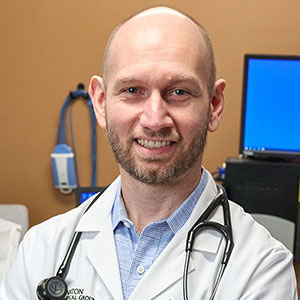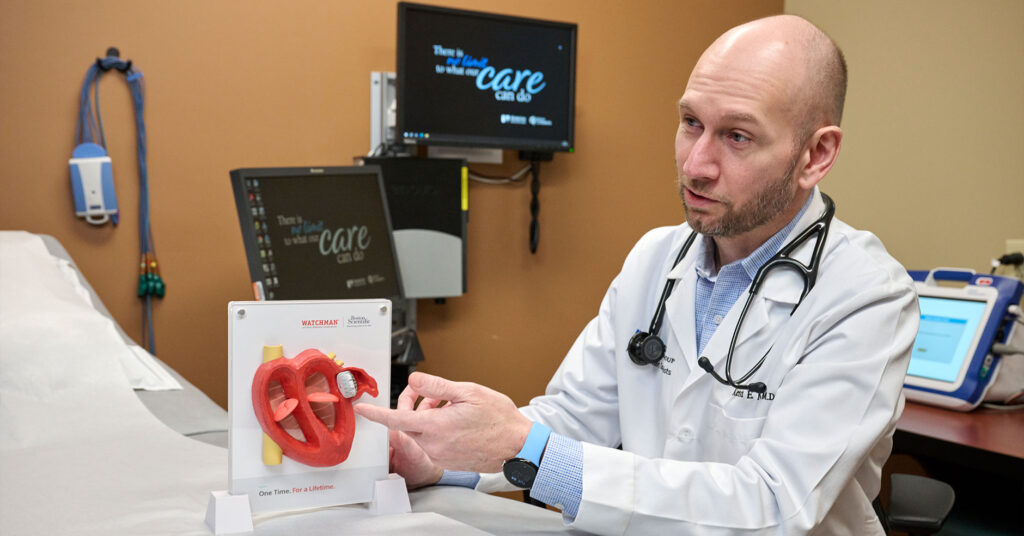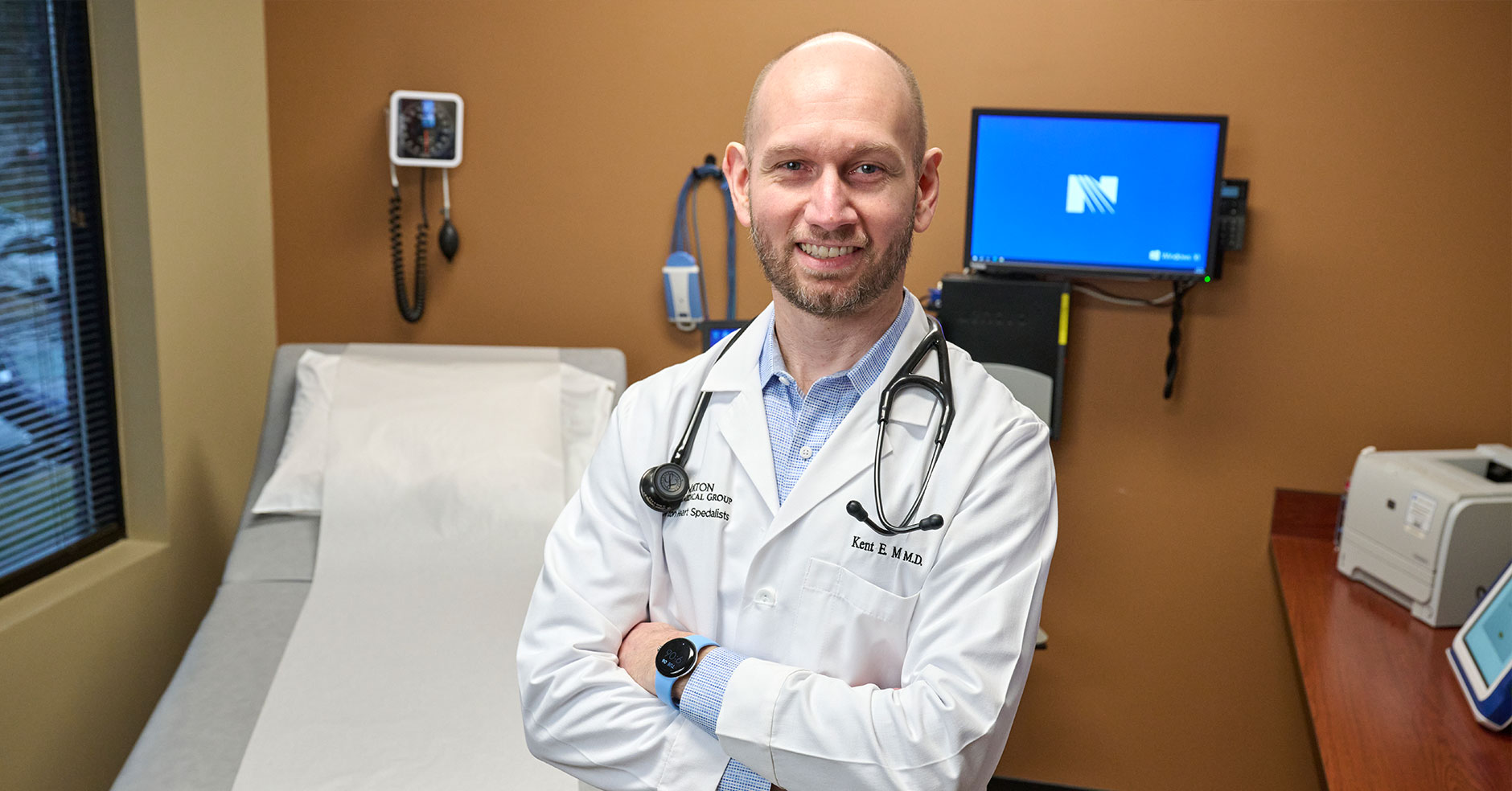Norton Healthcare’s cardiovascular and surgical experts team up for advanced heart rhythm care
LOUISVILLE World-class boxing champion Sugar Ray Robinson once said, “Rhythm is everything. Everything starts with your heart, and if it’s not in rhythm, you’re in big trouble.”
Kent E. Morris, MD, MBA, who is board-certified in internal medicine, cardiology, and electrophysiology, can appreciate Robinson’s insights. Morris is associate director for Norton Heart & Vascular Institute and serves as medical director of electrophysiology.
EP, as it is known, assesses and treats conditions that affect the heart’s electrical system and activity. It uses radiofrequency ablation, pacemakers, and automatic implantable cardioverter defibrillators (AICDs) to fix hearts that are unable to maintain a healthy rhythm.
Morris explains that treating abnormal heart rhythm conditions generally falls within two broad areas. One is arrhythmia management, which includes atrial fibrillation or supraventricular tachycardia (SVT). The other involves implantable cardiac devices, such as pacemak
While SVT can present at any life stage, it often involves younger patients. Atrial fibrillation, commonly abbreviated as AFib, generally impacts older patients, but can occasionally affect those in their 30s or even their 20s.
Pacemakers are more commonly used among an older population. Implanted defibrillators — largely indicated for prevention of sudden cardiac death in patients with prior heart attack or cardiomyopathy — are used across all ages.
AFib, which can be paroxysmal (intermittent) or persistent (continuous), can be treated with medications or with ablation. During his years in practice, Morris has seen great progress in ablation procedures both in the technology as well as improvement in the outcomes. This progress has led to stronger recommendations for AF ablation in the clini-

cal guidelines. His team has treated many patients who have done well for decades after the procedure.
“I always hesitate to say we can cure AFib, but I think in some patients we’re able to do that,” Morris says.
The earlier heart disease is diagnosed, the better patients’ outcomes tend to be, and this is especially true for Afib, says Morris. He cautions however this may not apply for older patients with multiple comorbid factors, especially if those factors are not well controlled.
Game-Changing Technologies and Multidisciplinary Care
Morris describes interventional electrophysiology as a relatively new field. The first external pacemaker was invented around 1960. Implantable pacemakers soon followed. The first ablations occurred in the 1990s.
When he began practicing 14 years ago, AFib ablation could be a day-long procedure that often involved an overnight hospital stay. Today, it generally takes two to three hours, and most patients are home the same day.
“We can now make 3D electro-anatomic maps very quickly with 5-to-10,000 data points that represent both the anatomy and electrical signals inside the heart,” says Morris.
Norton Heart & Vascular Institute is committed to innovation. In 2016 it was the first program in the Louisville area to complete a minimally-invasive WATCHMAN™ procedure. WATCHMAN devices help reduce stroke risks for patients with non-valvular AFib. They offer an alternative treatment for patients who cannot use blood thinners long term.
In 2021 the WATCHMAN FLX, which Morris considers easier and safer to use, was introduced. Fast-forward to January 2024 and Morris’ team completed its five hundredth WATCHMAN procedure, the first in Louisville to implant this many.
Morris applauds hardware and computing advancements for helping specialists achieve outcomes that were hard to imagine 10 or 15 years ago. Yet, he is quick to credit excellent multidisciplinary team work for much of the EP clinic’s overall effectiveness.
“We have nurse practitioners, physician’s assistants, nurse navigators, device nurses, device technicians, as well as amazing support staff,” says Morris. “It takes all of us to care for our patients.”
Common — and Surprising — AFib Causes and Culprits
AFib is a complex disease process. It can be related to genetics as well as modifiable risk factors such as hypertension, diabetes, obesity, alcohol use, and sleep apnea.
Full, accurate histories for patients are crucial since numerous classes of medications can potentially cause AFib. Various prescription and over-the-counter medications — including common cold treatments — have the potential to stimulate the heart and cause AFib.
A number of other factors can contribute to Afib. Patients are often surprised to learn sleep apnea, especially if it’s untreated, is a significant AFib risk factor. Individuals with

sleep apnea may complain of sleepiness or snoring, but they don’t connect their apnea to Afib symptoms such as a pounding heart or overall lack of energy.
Most sleep apnea patients are prescribed a CPAP machine to wear while sleeping, yet some people struggle with the equipment or decide for various reasons not to use it. Morris stresses it’s crucial to use CPAP equipment consistently as prescribed. Credible studies and literature conclude that successful treatment of Afib for patients with sleep apnea is unlikely unless the apnea is treated.
“If you have an ablation and you don’t treat your sleep apnea, the long-term success rates are almost as bad as if you never had an ablation,” says Morris. “If you have sleep apnea, you treat it, and you get an ablation, then your success rates are about as good as people that don’t have sleep apnea.”
When Morris sees new patients, he stresses that medications and technology can help them a lot, but they must also do their part to control their AFib. He lets them know credible data support the importance of controlling their blood pressure, weight, diabetes, and glycemic levels and limiting their alcohol use.
“Atrial fibrillation is quite a varied disease. Depending on a number of factors, we have a very good chance of curing some people,” says Morris. “For others, it’s more a chronic disease we strive to manage over time.”
A Simple Aim: Live Life and Enjoy It!
Morris, who grew up in southern Illinois, was drawn to science at an early age. He enjoyed working with people and found opportunities throughout high school and undergraduate studies that led him to focus on medicine.
During his studies at Southern Illinois University School of Medicine, the future doctor was drawn to physiology-based and conceptual fields. He soon developed a special interest in cardiology.
While doing his fellowship at St. Vincent Heart Center in Indiana, Morris became friends with a student from Louisville. His friend connected him with a private cardiology practice that hired him in 2010. A year later Norton Healthcare purchased the practice, which would become Norton Heart & Vascular Institute.
Morris strives to provide high-quality, compassionate, patient-centered care. Seeing the profound impact heart rhythm disorders make on people’s lives gives him a special appreciation for the trust his patients put in him and his colleagues.
It is gratifying, he says, to see patients come in for follow-up and report they are living full, happy, productive lives. Many patients say they no longer fear simple activities that might have once caused their hearts to “jump out of rhythm.”
“It can be a bit bittersweet,” says Morris. “On one hand your patients may no longer need you quite as much, yet it’s fantastic to see they are essentially cured of a heart rhythm disorder.”
Ultimately, Morris’ message to patients, and others as well, is simple: “We’re here if you ever need us, but go out and live life and enjoy it!”


